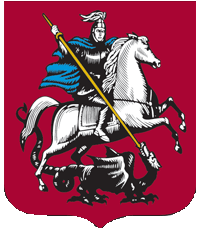|
|||||||||||||||||||||||||||||||
|
Walking tour around place of former glory and pride. Hidden picturesque places, abandoned palaces, huge monuments – for ones in melancholic mood. Lots of bars and attractions, crazy rollers, horse-riding, flower and musical festivals - for optimistic ones! GORKY PARK The official name of this famed, sprawling green space is Central Park of Culture and Rest, named after Maxim Gorky, but Russians refer to it as Park Gorkovo ( Gorky Park ) or Park Kultury (the name of the nearby metro station). The most visited - and least restful - part of the park is near the entrance, where an amusement park, ponds, and a dizzying array of game booths, trinket stands, and street performers compete for attention. In fact, the park extends several acres beyond that, tracing a swath of green between the southwest loop of the Moscow River and the sharp slope of Sparrow Hills . The park amusements are standard fare for most Western visitors (especially savvy young ones ) with one notable exception: A real Buran space shuttle, designed for space flight but scrapped for lack of funding, is now parked along the river and open to visitors. It doesn't emulate weightlessness, though it will shake you up a bit in a blastoff simulation. Some of the other rides are in dodgy condition. Note the Lenin carving over the park's columned entrance. MUSEON - Â galery Another example of Russia 's confused allegiances in the post-Communist era, this park gathers together scores of busts and full-size statues of Lenin and other now-disgraced Soviet icons. The pieces were torn down in the democratic fervor of the early 1990s, but not destroyed. Many ended up in a graceless heap in an alley in nearby Gorky Park before a group of independent artists righted them and gave them a new home behind the modern art museum. Despite its political overtones, the park is a peaceful and pleasant place, with wooden bench swings, bird feeders, and a garden of exotic and Russian pines. The statues of Soviet leaders are interspersed with other icons such as pianist Van Cliburn, and surrounded by lanes of avant-garde sculptures. It's easy to combine this with a visit to the modern art museum. Allow a half-hour or so for exploring and resting in the park. Museum FSS Historically-demonstrative Hall of Federal Service of Security of Russia (former name - the Chekist Hall of KGB of the USSR ) was opened in September 1984 on the initiative of Y.V.Andropov, who was then the Chairman of KGB. The Hall was created for perfecting professional training of the State Security organs employees, as well as for education of young employees in the best traditions of special service organs. From the beginning and up to 1989 the number of visitors exceeded 60 thousand people. Among them were leaders and operative staff of the Central body as well as of local organs, teachers and students of educational establishments of KGB, employees of the Social countries Security organs, who came in groups; frequent visitors were those who got training in this country, also deputies of Supreme Soviet of the USSR and Russian Federation.Social political reforms, broadening open ness and democratic reforms in the country caused the necessity of a wider interpretation of the Security organs activities.With this purpose in view in October 1989 the Hall was opened for organized groups of representatives of factories and offices, officers, students and schoolchildren. A little later the similar decision was taken concerning foreign guests. Before the opening of the Hall a presentation for Soviet and foreign journalists accredited in Moscow was held. Since that moment the Hall was visited by hundreds of thousands of Russian and foreign guests. It was visited by practically all the main special services of the world. CITY TOUR - SEVEN SISTERS AND HOUSE ON THE EMBANKMENT MOSCOW METRO - the Moscow Metro is the most convenient way of transport. Visit the most interesting Moscow metro stations with our guide to see the architectural style and the fascinating design of the “ Underground Palace ”. Visit Mayakovskaya station – one of the first one to be commissioned in 1938, Kropotkinskaya – with columns and walls faced with marble taken from the demolished Cathedral of Christ the Savior, Ploshchad Revolyutsii – with the bronze figures of the creators of the new socialist order (76 statues in total), Komsomolskaya – with mosaic panels depicting the country's great military leaders, Noboslobodskaya – the brightest and one of the most beautiful stations with beautiful stained-glass windows and mosaic panel. |
|
||||||||||||||||||||||||||||||
|
|||||||||||||||||||||||||||||||


 ) + ')
